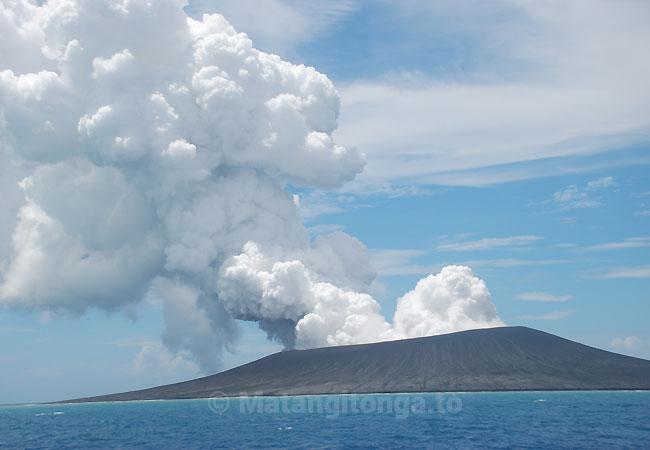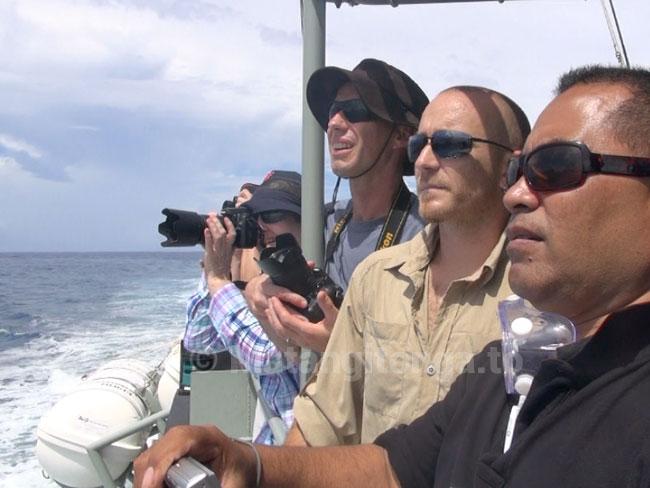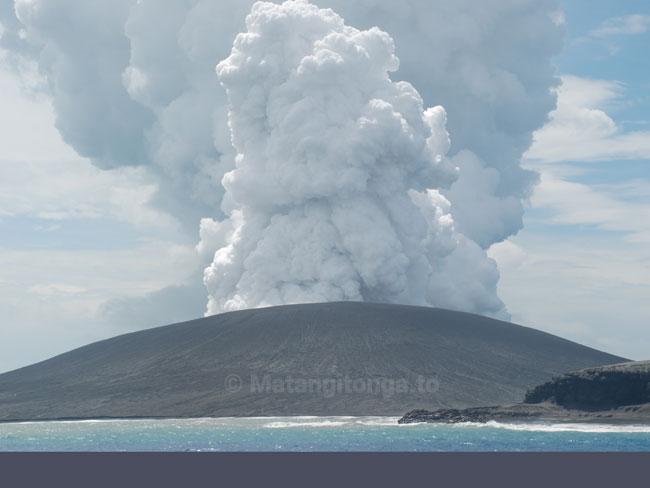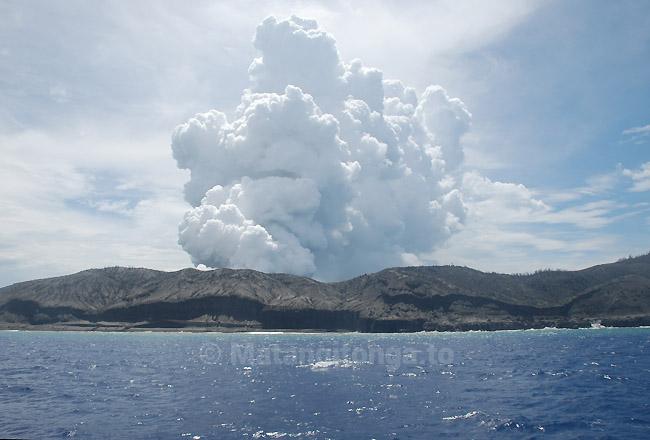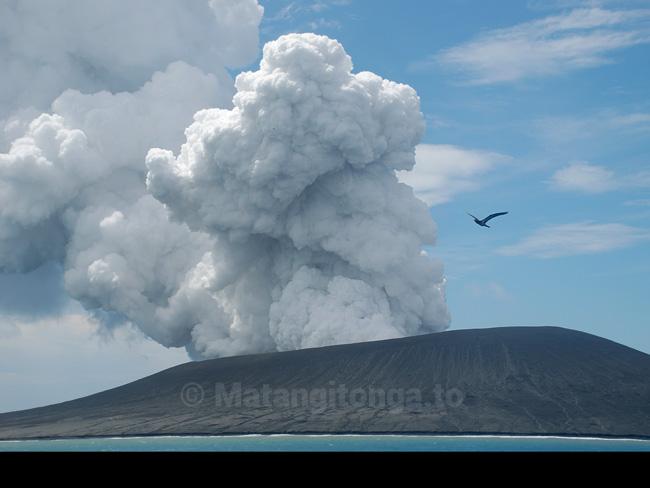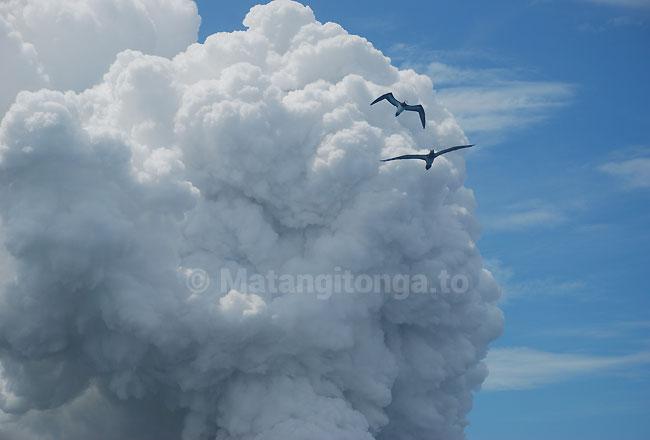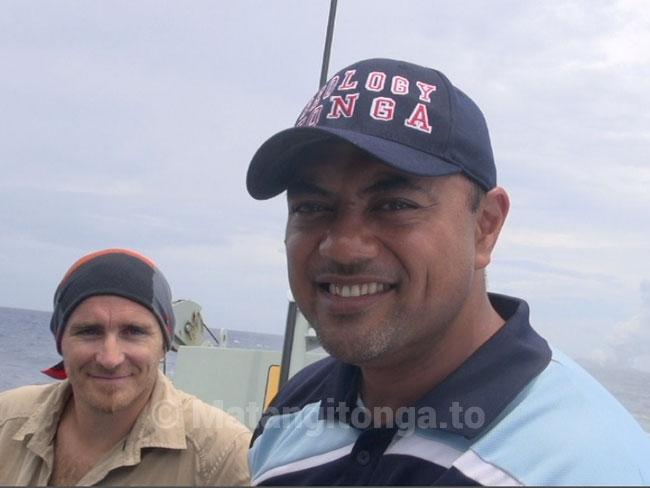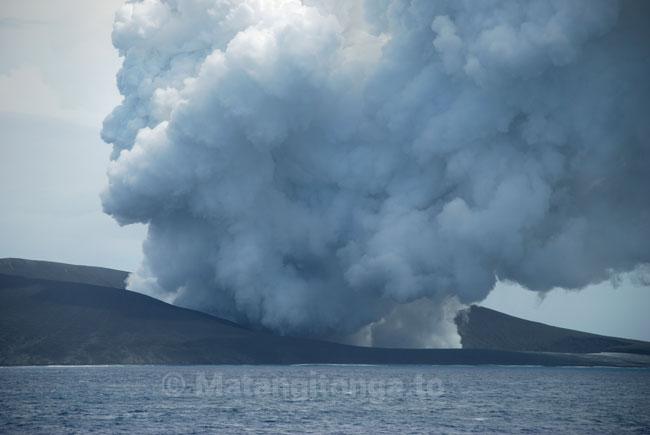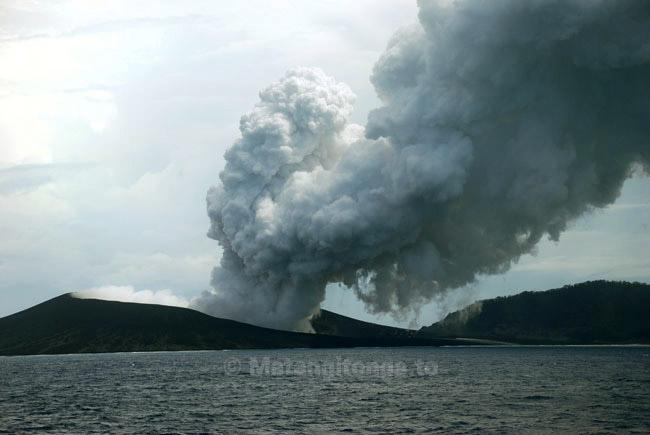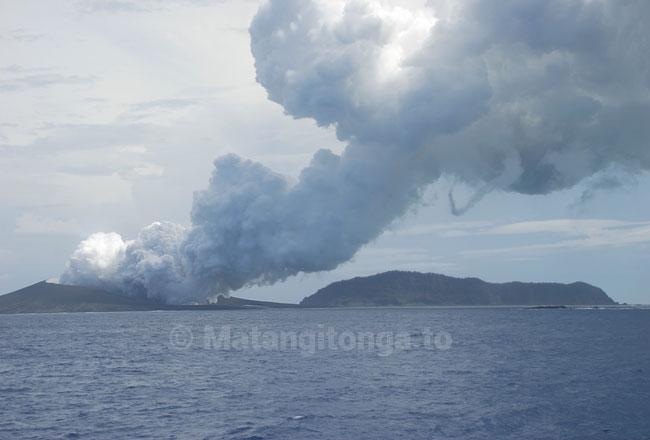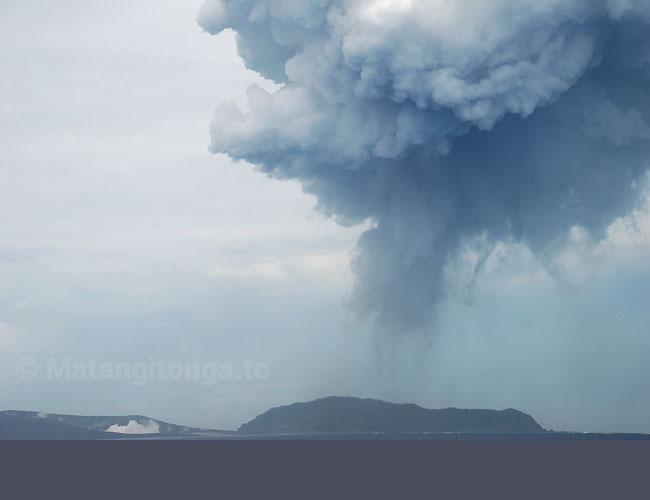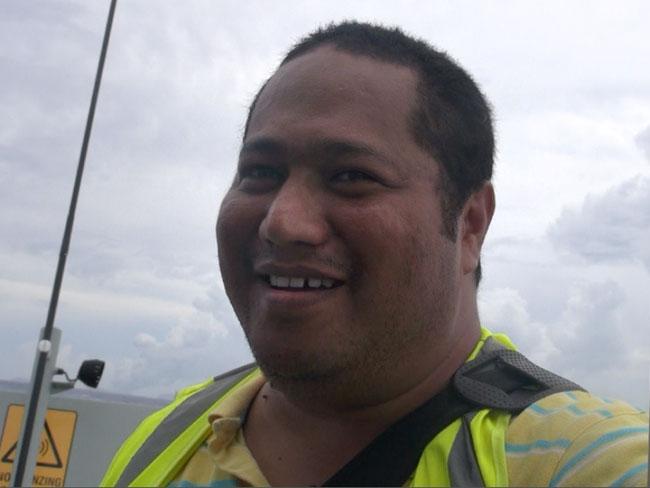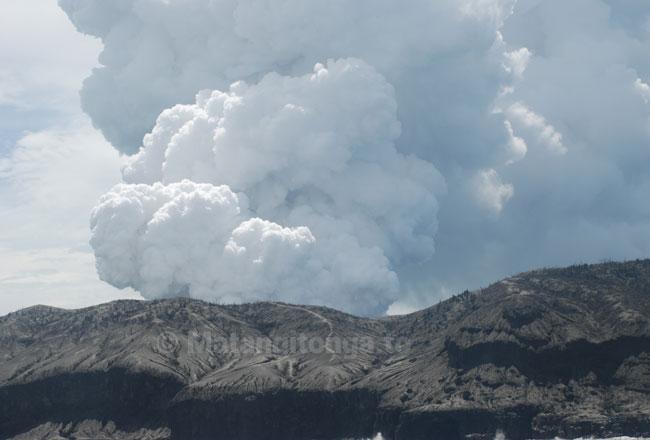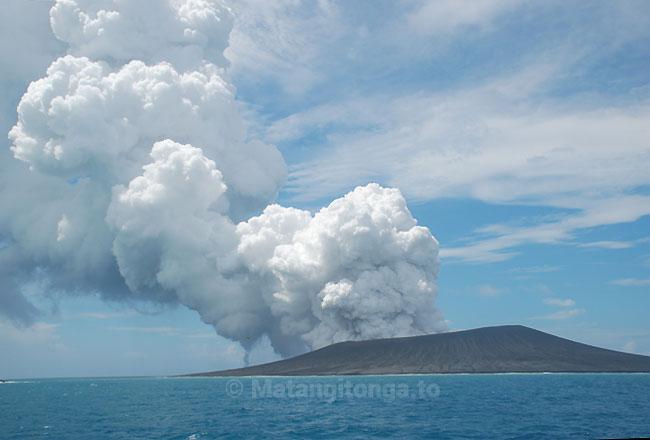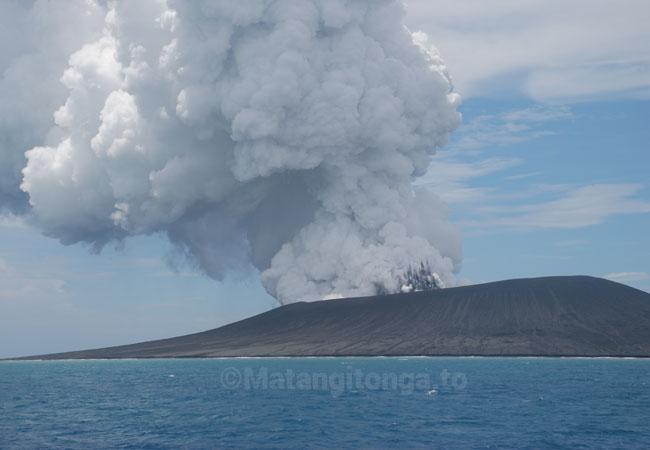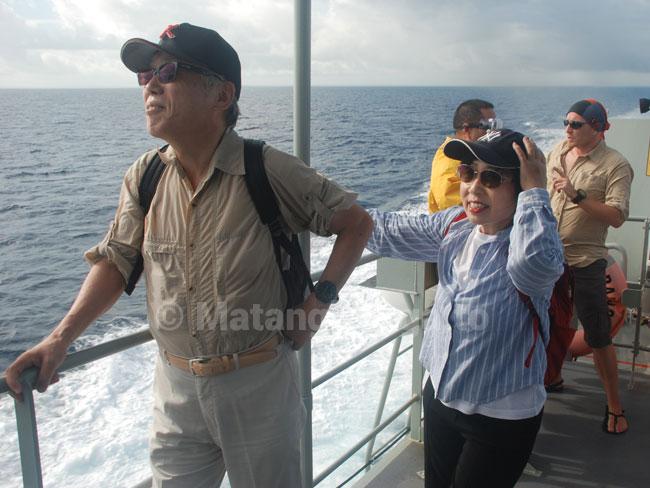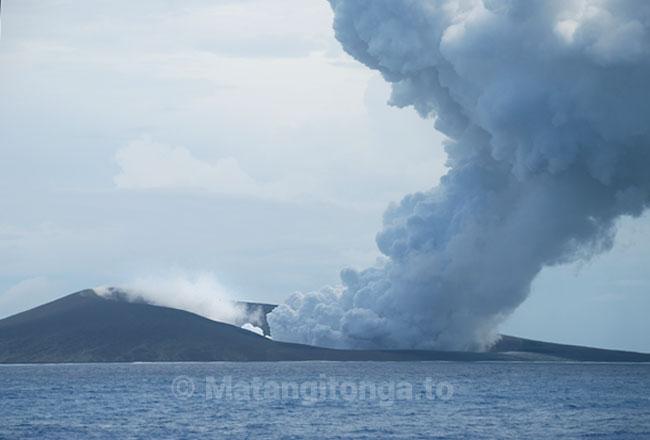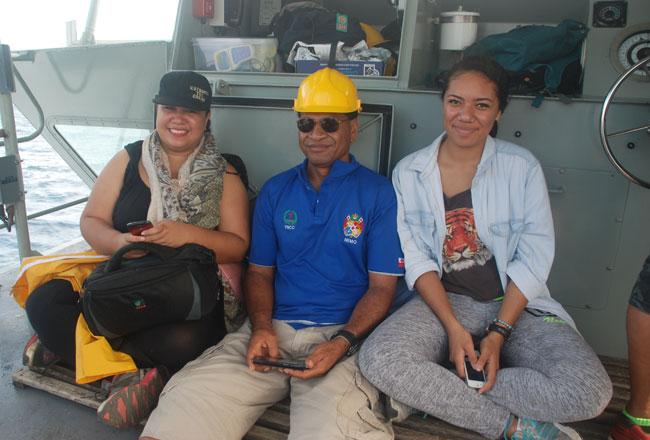
Photos by Mary Lyn Fonua and Caroline Manu
A geological survey of the volcanic activity between Hunga Tonga and Hunga Ha'apai over the weekend found that while ash eruptions are continuing the activity appears to be less than in previous days and a lot less than in previous weeks.
“Substantial ash emission to the altitudes at which aircraft fly have not been observed for several days,” the National Volcano Advisory Center of the Ministry of Lands and Natural Resources advised on Saturday January 17.
International and domestic flights have operated without interruption in the last few days.
Taaniela Kula, of the Ministry of Lands and Natural Resources who organised the survey said, "The ash is still below the aviation routes."
The survey team, including two volcanologists from GNS-Science in New Zealand, visited the site, located on a NNW bearing 65km from Vuna Wharf, on January 17, on board the VOEA Pangai. The site observation was sponsored by the New Zealand High Commission.
Nico Fournier, a volcanologist from GNS Science, Taupo, said there is a lot of steam coming out from the volcano. “We do have a small amount of magma or molten, rocks, which are very hot, reaching the surface and essentially at sea level meeting up with seawater and that basically produces some explosions, and occasionally we've got some ash being omitted and maybe shooting up to a few hundred metres high, but the ash is very wet," he said.


The eruption is continuing from the new island that started growing a month ago.
The team issued an advisory that stated, “During most of our time near the island, strong emission of steam to heights of 7 – 10 km was observed, but with only limited amounts of ash. Later, some eruptions that threw dense, wet ash and small rocks 200-300m into the air, [were] accompanied by further strong emissions of steam.”
They noted on Saturday that Hunga Tonga and Hunga Ha’apai islands were covered by ash from the eruption over the last month. “The eruptions observed today were too small to deposit ash on those islands, suggesting that the eruptions a week or two ago were probably substantially stronger.
“No trace of rafts of pumice or other floating volcanic debris was observed. No strong smells of volcanic gases were noticed within 2NM of the site. It was noticed, however, 15-25NM on the way to the site.”
They said the style of the eruption is similar to that at Hunga Ha’apai in 2009, but the volume of material erupted this time is much greater.

Matangi Tonga Online's Mary Lyn Fonua and Caroline Manu, joined local media and other observers on the field trip to the volcanic vent. An hour was spent in a semi-circuit of the vent that brought the team to an observation point within 700 metres on the windward side of the new island.
Cloud furnace
The huge column of steam and gas rising high into the sky and catching the sun from the surprisingly quiet eruption is an awe-inspiring sight. This could be Maui's own cloud furnace. Every five minutes or so a new puff of intensely white cloud is slowly pushed from the vent - a new-born cloud that lifts off and expands slowly, forming intriguing shapes and figures as it rises into the volcanic plume that is blowing away with the northwesterly wind.
There were two or three small black ash eruptions during the hour, which contined to sculpt the new ash island. Frigate birds fly on the thermals from the vent in a deceptively beautiful scene.
Moleni Tu'uholuaki, of the Tonga Meteorological Service, warned that the cloud might contain sulphur rain. “Cloud from the volcano has blown by the wind roughly five to six kilometres away, so we suspected it might contain something like sulphur or sulphur rain," he said. “That's why we are recommending a no-go zone of 10 kilometres from the centre of the activity - just to be on the safe side.”
Lateral explosions are occasionally extending up to one kilometre from the vent. When that happens, “You wouldn't want to be there,” said Nico.




